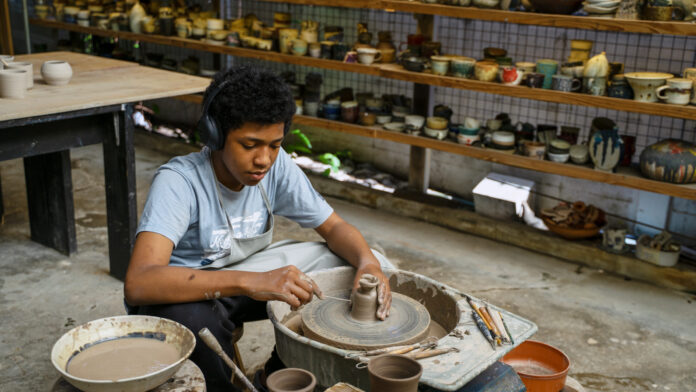By The Frontpage Journal
In the quiet corners of Sri Lanka’s villages and in the buzzing studios of its cities, something remarkable is taking shape. A new generation of artisans, many in their twenties and thirties, is bringing life back into the country’s traditional crafts. These young Sri Lankans are not simply preserving heritage; they are reinventing it with confidence and creativity, making it relevant for a changing world.
Across weaving looms, pottery wheels, and lacquer-turning benches, age-old techniques are finding new expressions. What was once regarded as old-fashioned is now viewed as timeless. These young artists and entrepreneurs are transforming traditional crafts into fashion statements, pieces of functional art, and items with international appeal.
Handloom weaving is one example of this shift. For many years, it was a fading industry. Older artisans struggled to find successors as younger people sought work in urban centers. Today, however, handloom products are returning to prominence in Colombo’s boutiques and across digital marketplaces. Sarees, shawls, and home textiles in modern patterns and color schemes are gaining popularity. Some of the most notable revivals are being led by brands and designers who partner directly with village weavers. They are offering fair wages, new design directions, and broader opportunities. As one young designer, Malithi Jayasena, explained, the goal is not just to sell fabric but to tell stories—stories of heritage, sustainability, and the richness of Sri Lankan identity.
Pottery is another traditional craft experiencing a new wave of creativity. Once limited to basic rice pots and water filters, clay products are now being shaped into sleek home decor and modern tableware. At markets and galleries, ceramic art is attracting interest from both locals and tourists. In Galle, a young ceramist named Nuwan Hettiarachchi is mentoring local youth, showing them how to apply traditional terracotta methods to create minimalist and elegant pieces. He sees innovation as a natural progression of tradition and believes that heritage can be a springboard for creative design.
Visitors from abroad have shown strong interest in this movement. Many participate in hands-on workshops or bring home personalized pottery as souvenirs. These encounters help bridge cultures while supporting local livelihoods.
Lacquer work, known locally as laksha, is perhaps one of the most intricate of Sri Lanka’s traditional crafts. Practiced primarily in Matale, this art involves applying vibrant natural dyes to turned wooden surfaces in fine spiral patterns. The craft was once on the verge of disappearing, but it is now being revived by younger artists who are using lacquer to create jewelry, pens, and decorative items suited for modern lifestyles. Brands with digital storefronts are collaborating with master craftsmen to bring these products to global markets, showing how innovation can go hand in hand with authenticity.
For many of these young craftspeople, reclaiming traditional art forms is more than a career. It is an expression of identity, purpose, and environmental responsibility. In an era of mass production and fast fashion, handcrafted goods stand out as symbols of sustainability and human connection. Foreign consumers, especially those interested in ethical living and conscious buying, are increasingly drawn to Sri Lankan craftsmanship not just for its beauty but for the deeper values it represents.
Support from institutions and community groups is also helping this revival gain momentum. Public programs, artisan grants, and skills development initiatives are empowering young creators with training and exposure. Social media has played a crucial role as well, giving artisans the tools to share their work, build audiences, and sell products directly to customers around the world.
There are still challenges, including market access and the pace of cultural change, but the momentum is growing. What is happening across Sri Lanka’s workshops and studios is not simply a return to the past. It is a reshaping of the future. As young craftspeople redefine what it means to honor tradition, they are creating a new artistic language rooted in history but open to the world.
Through every thread, brushstroke, and carved line, Sri Lanka’s cultural spirit is being reawakened, carried forward not by nostalgia but by the steady hands of a new generation.




